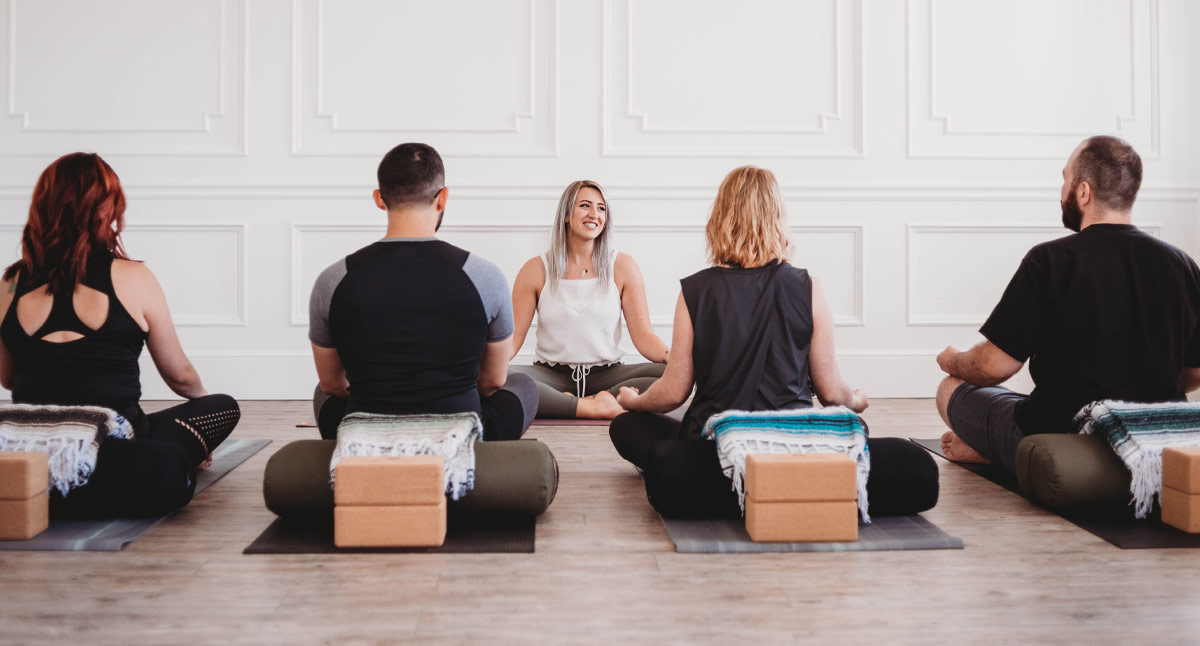
“Listen to your body” has become a widely disseminated instruction in the yoga world. It’s an important one, a skill that reaches out into life off the mat. As teachers, we often tell our students to listen to their bodies. But teaching yoga requires that we also listen to our students. When we listen we create an environment where students feel respected and safe, and we also might learn something in the process.
About 30 years ago I attended an Iyengar yoga workshop. We were working up to Urdhva Dhanurasana (Upward Bow), stretching our quads and preparing our shoulders for at least 30 minutes before we started practicing the most rudimentary backbends.
The teacher then showed us how to practice Urdva Dhanurasana with our feet on a chair and our hands on the floor. This is an especially helpful variation for people with less bendy lumbar spines and tight shoulders. It enables them to feel the exhilaration of the pose without the strain. It’s not without its own concerns though. It takes a lot more arm and shoulder strength to push up into this variation than it does to push up from the floor. When I pushed up into the pose, I immediately felt a sickening sensation in my left deltoid. I attempted to push through the pain and promptly collapsed onto the floor.
I don’t know what happened in my shoulder that day, but it was quite painful. When I told the teacher, she responded with irritation rather than concern. She quickly said, “You’ll be okay,” and then pointedly ignored me for the rest of the class.
As it turned out, she was right; my shoulder felt okay the next day. Still, her response bothered me. I doubt she really knew if I was going to be okay. Instead, I felt her response was meant to deflect the situation as quickly and quietly as possible. Her irritated and dismissive response made me feel as if I’d done something wrong, even though I was simply following her instructions.
For me, on that day, those instructions didn’t work. I’ve since done Urdva Dhanurasana with a chair many times without incident. Rather than concern for a possible injury, the teacher responded defensively. For the rest of the class, I felt she was angry at me for being in pain and for bringing it up. For me, it became a lesson in how not to respond to yoga class mishaps.
Listening with Humility While Teaching Yoga
As teachers, no matter how experienced and knowledgeable we are, we can never know exactly what a student is feeling at a given time. When we say, “trust your body” or “listen to your body,” we are encouraging students to give primacy to whatever feedback they are receiving from their bodies, regardless of what we are telling them. If we then become defensive or dismissive when they tell us something hurts—or worse, if we order them to push through discomfort—we create confusion. We also discourage the very personal inquiry that leads to intelligent practice.
A Different Approach
So how would I have handled the situation differently? First, I would have validated the student’s experience. While I would not have been happy that someone was experiencing pain because of an instruction I’d given, I would not have dismissed it or blamed the student. I would have asked what the student was feeling, where she was feeling it, and asked her to move her shoulder around gently and let me know if any actions made it better or worse. Based on that information, I would determine whether to encourage her to avoid certain actions and/or poses. I would check back with her periodically to see how things were progressing, and make sure she was clear that if anything I suggested aggravated the problem, she should stop immediately.
When we’re teaching yoga, we must walk our “listen to your body” talk. This means that when a student feels discomfort that we don’t understand, we need to join them in an investigation of what is causing it and how to alleviate it. When we dismiss our students’ concerns because we feel threatened or unhappy about a possible injury, nobody learns anything.
Teaching yoga is a two-way relationship, and no two people’s experience of a pose will ever be exactly the same. When students ask me, “what should I feel?,” I answer with the question, “What do you feel?” This empowers the student and encourages them to look deeply and learn how to listen to her own unique body.
